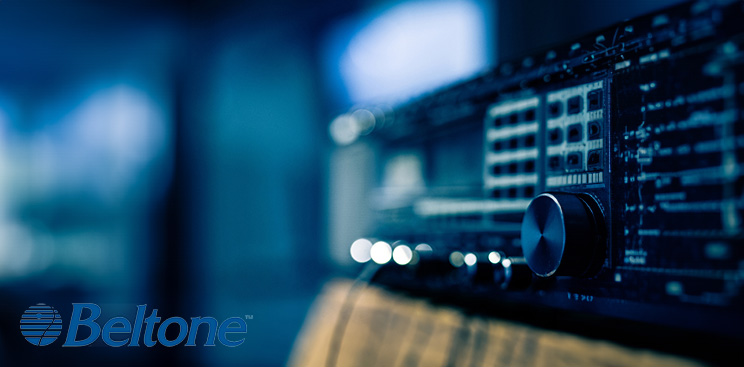
Hearing aids have come a long way in helping individuals with hearing loss reclaim their quality of life. From the humble beginnings of ear trumpets to the state-of-the-art digital devices available today, the evolution of hearing aids is a testament to human ingenuity and the desire to enhance hearing abilities. In this article, we will take a fascinating journey through time, exploring the different generations of hearing aids and the remarkable advancements they have brought.
Ear Trumpets: The Early Days of Hearing Assistance
Before the modern technology we have today, people relied on ear trumpets to amplify sound. These fascinating devices were shaped like elongated cones that collected sound waves and directed them into the ear. By adjusting the angle and shape of the trumpet, individuals with hearing loss could enhance their ability to hear.
During the 17th to 19th centuries, ear trumpets gained significant popularity. They were not only functional but also stylish accessories, with individuals often adorning them with intricate designs and personalized engravings. However, despite their usefulness, ear trumpets had limitations. They were large, cumbersome, and only provided moderate amplification. Additionally, their effectiveness relied heavily on the individual's ability to position the device correctly, leading to challenges in obtaining optimal sound quality.
The Rise of Electric Hearing Aids
The introduction of electric hearing aids marked a significant turning point in the history of hearing assistance. These devices utilized electrical components that enabled greater amplification and improved sound quality. Carbon hearing aids, developed in the late 19th century, used carbon granules to convert sound into electrical signals, which were then amplified and transmitted to the ear.
In the 1920s, vacuum tube technology revolutionized hearing aids further. Vacuum tubes amplified the electrical signals more effectively than carbon granules, resulting in clearer and louder sound amplification. Despite their size and bulk, these electric hearing aids paved the way for future advancements in the field.
Analog Hearing Aids: A New Era of Sound Amplification
The advent of analog technology in the mid-20th century brought about a new era of hearing aids. Analog devices converted sound waves into continuous electrical signals, which were amplified and delivered to the ear. Compared to their predecessors, analog hearing aids offered improved sound quality, better amplification control, and reduced background noise.
Analog devices were smaller, more discreet, and came with additional features such as volume control and feedback reduction. The introduction of directional microphones further enhanced speech intelligibility in noisy environments. However, analog hearing aids still had limitations. Adjustments had to be made manually, and the devices couldn't differentiate between different sound environments, resulting in less precise amplification.
The Digital Revolution: State-of-the-Art Hearing Aid Technology
The digital age transformed hearing aids into the advanced devices we know today. Digital hearing aids, introduced in the late 20th century, revolutionized the industry by utilizing digital signal processing (DSP). This technology provided superior sound processing, allowing for precise amplification and increased customization.
Digital signal processing analyzes sound signals and adjusts them to meet the wearer's specific needs. By separating speech from background noise and selectively amplifying desired sounds, digital hearing aids offer enhanced speech clarity and improved listening experiences. This technology also introduced features such as programmable settings, multiple listening programs, and automatic adjustments based on environment.
Digital hearing aids go beyond amplification; they take into account individual hearing preferences, lifestyles, and unique hearing challenges. They can be personalized and fine-tuned by audiologists to ensure optimal performance in various listening situations. Additionally, modern digital hearing aids are smaller, more discreet, and often come with wireless connectivity options, enabling users to stream audio directly from smartphones and other compatible devices.
The Future of Hearing Aid Technology
As technology continues to advance, the future of hearing aid technology holds great promise. Emerging trends indicate potential advancements in artificial intelligence and machine learning, allowing hearing aids to adapt and learn from users' preferences and optimize sound in real-time. Connectivity options are also expected to evolve, with the possibility of seamless integration with smart home devices, telehealth services, and virtual assistants.
Improvements in user experience and comfort are also anticipated. Future hearing aids may become even more discreet, comfortable, and easier to use. Battery technology could advance, leading to longer use without the need for frequent battery changes. These advancements aim to provide individuals with hearing loss a seamless and natural hearing experience while fitting seamlessly into their daily lives.
From the early days of ear trumpets to the cutting-edge digital devices of today, the evolution of hearing aids has revolutionized the lives of millions of individuals with hearing loss. We have witnessed remarkable advancements in technology, resulting in increasingly precise amplification, improved sound quality, and personalized user experiences.
If you or a loved one are experiencing hearing loss, we encourage you to explore the possibilities offered by modern hearing aids. The field of audiology continues to push boundaries, striving to improve the quality of life for those with hearing challenges. Embrace the transformative power of digital hearing aids and embark on a journey to rediscover the joy of sound. Don't let hearing loss limit your experiences; the future of hearing aid technology is waiting to enhance your world.
